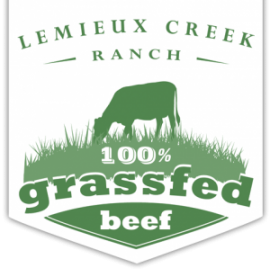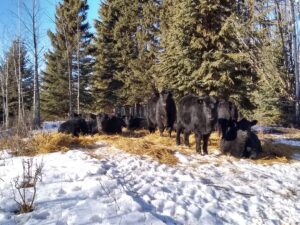Unlike Angus, Galloway cattle have had a very low profile in the North American beef industry. But as the demand for grass-fed and finished meat grows, so does the demand for Galloway genetics. When it comes to quality beef from pasture, this breed wrote the book. Galloway brings to the quality equation a five-century history of producing exquisite beef from pasture alone.
These hardy beasts originated in the rocky, highland region of Scotland known as the Southern Uplands and were able to thrive on the sparse vegetation and unforgiving climate. They sport a double winter hair coat that protects from the elements and keeps them foraging and gaining in all but the harshest of winter weather, making them an energy efficient choice for producers.
But by far their best known attribute is their fine-grained, tender, juicy meat. Taste panels in the U.S. and abroad have ranked the distinctive Galloway beef at or near the top of the charts on the qualities that most impact their eating experience: tenderness, flavour, marbling and juiciness.
More: Galloway Ranks High with Consumers
And while most of the beef industry has continued its steady push toward bigger, faster-growing beef animals, our slightly smaller Galloway/Angus crosses are slower grown on a healthy diet of fresh forage and clean water. After harvest, the meat is dry aged for 10 days before being processed to enhance the flavour.



